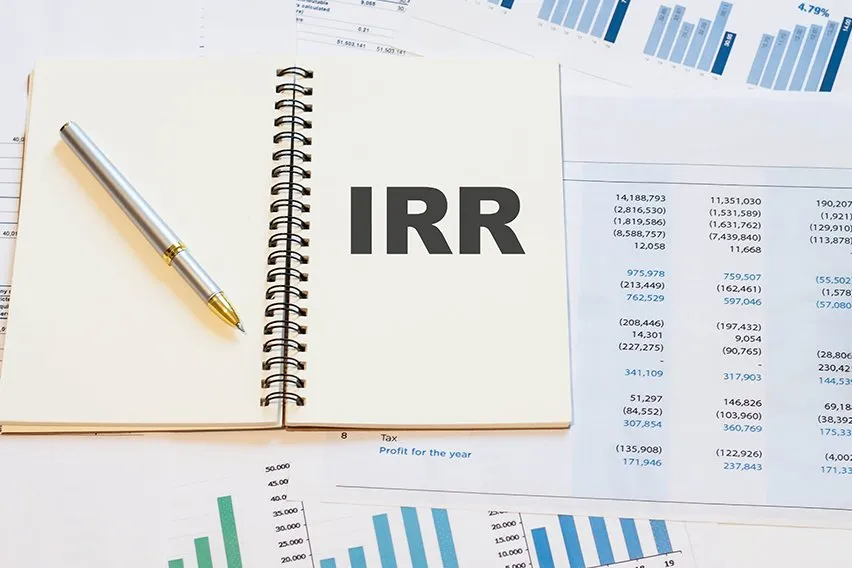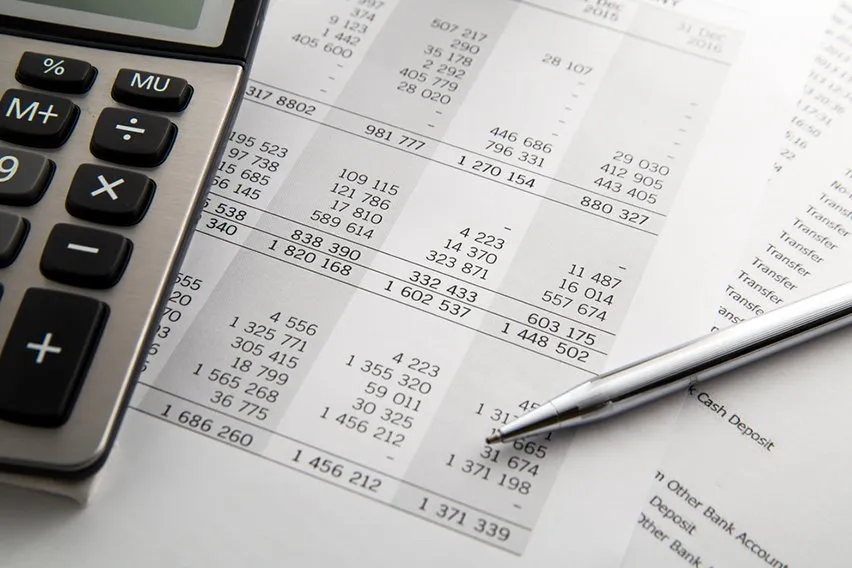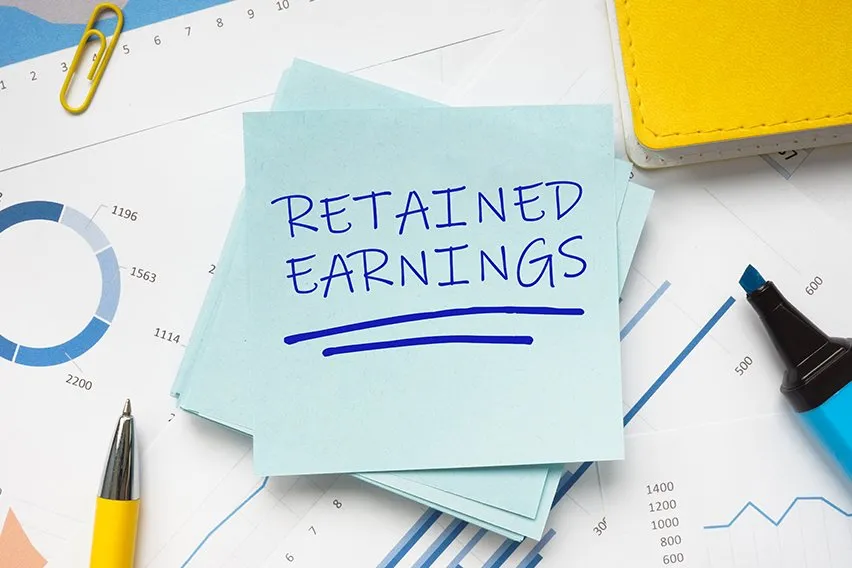What Is Leverage Ratio & How to Calculate It?

When it comes to finances, analysis plays a large part. There are a large number of financial ratios that can be used. They all serve their own purposes, and can provide insight to the different financial aspects of a company. Of these ratios, perhaps the most important are financial leverage ratios.
If you’re looking for a way to examine your business’s financial stability, keep reading. We’re going over financial leverage ratios and how to calculate them!
Here’s What We’ll Cover:
Three Types of Leverage Ratios
How Do Companies Create Leverage?
Looking More Closely at Common Leverage Ratios
Using Coverage Ratios Alongside Leverage Ratios
What Are the Risks of High Leverage?
What Is a Leverage Ratio?
Leverage ratios are one of several different financial measurements of a company. Generally speaking, they measure one of two things:
- How much of a company’s capital comes from loans (capital ratio)
- How well a company can handle its financial obligations
There are many different kinds of leverage ratios, including things like equity ratios. All are important, and they provide different information about a business. They are important because they provide insight to a company’s equity and debt. This can be used by other businesses and investors.

What Does a Leverage Ratio Tell You?
It really depends on what aspect you’re looking at the ratio from. For investors, a leverage ratio tells whether or not a company is worth investing in. This is true for private investors, as well as financial institutions. A financial institution will have very specific leverage requirements, in most cases. When a company’s leverage ratio indicates that they are seeing consistent growth, then they are more appealing for investment.
For business to business interactions, a leverage ratio indicates whether or not a company should be worked with. These ratios tell other businesses whether or not the business in question will meet its financial obligations. If a company doesn’t settle it’s financial obligations, you won’t want to do business with them.
At the purest form, any leverage ratio is a measure of capital adequacy. When you have a good leverage ratio, you’re more likely to make money. When your ratio is poor, it’s unlikely that business will do well in the future. By being able to assess the amount of borrowed money that a business is using, this becomes easier to predict.
High leverage in a company’s capital structure can be risky. When earnings and profits are higher, higher leverage results in more money being made overall. However, if earnings fall, then a company may experience capital shortfalls. This puts the company’s capital at risk if market conditions change.
Common Leverage Ratios
Some of the most common leverage ratios may already be familiar to you. Some of the most common ratios are listed below, as well as the formula that goes with them:
- Debt-to-Assets Ratio = Total Debt / Total Assets
- Asset-to-Equity Ratio = Total Assets / Total Equity
- Debt-to-Capital Ratio = Total Debt / (Total Equity + Total Debt)
- Debt-to-Equity Ratio = Total Debt / Total Equity
- Debt-to-EBITDA Ratio = Total Debt / Earnings Before Taxes, Interest, Depreciation and Amortization
All of these are helpful to analysts, lenders, investors, and the companies themselves. As you can see, the ratios listed above have a common theme. Nearly every aspect of a business can be compared to its debt. This is important to keep in mind. Debt is often a number one priority for businesses.
Having the right amount of debt matters. Too much debt is damaging to any company’s finances. However, having too little debt is also a reason for concern, especially when it comes to lenders. Without proof that it can handle its obligations, a business is harder to trust.
Three Types of Leverage Ratios
When you’re defining leverage ratios, there are generally three distinct types available. Every leverage ratio falls into one of the following categories. Each category has its specific uses, and displays different financial statements about a company.
Operating Leverage
When reviewing an operating leverage ratio, you’re comparing a company’s fixed costs to its variable costs. A high operating leverage ratio indicates that a company has a large amount of fixed costs. This normally means that they are a capital intensive firm. Small changes to sales volume could have major effects. The changes would be visible in earnings and return on investment.
A positive impact on a company like this could be a high demand for a product. This drives sales up, which in turn increases earnings. As demand rises, so does the price that the firm can charge, increasing return on investment. However, if the opposite were to happen, it could spell disaster. If the demand for the product decreases, then the fixed costs may not be covered due to lower earnings. An example of a capital intensive company is an automobile manufacturer.
When you’re looking at operating leverage, a higher percentage indicates a higher operating leverage. Companies tend to aim for 50% or higher. Lower percentage indicates a lower operating leverage. These figures are normally 20% or less.
Financial Leverage
Financial leverage ratios compare the amount of debt that a company is using to finance business operations. When a company chooses to use borrowed funds instead of equity funds, they can see a number of positive effects. Some of these include the company’s return on equity, as well as earnings per share. This only happens if the company’s increase in earnings is higher than the interest paid on the loans.
When companies rely too heavily on financing, it can lead to bankruptcy. The most common financial leverage ratios are listed previously in the article. We’ll also be going over some examples of them later on.
Combined Leverage
As the name implies, these ratios come from combining operating and financial leverage ratios. Combined leverage tends to be found when reviewing the financial statements of a company.
For example, analysts can look at a company’s balance sheet and income statement together. The income statement provides information on operating leverage. The balance sheet provides information on financial leverage. By reviewing them together, combined leverage can be assessed. Other leverage ratios rely on the cash flow statement, as well.
Thankfully, great accounting software can generate these statements ad hoc. This means you can access them any time you want to review your business’s leverage.
How Do Companies Create Leverage?
There are a number of ways for a company to create leverage. All of these methods of creating leverage depend on what financial sector the company is in. Here are some of the ways that a company can create leverage:
- Direct Asset Purchases: This is when a company purchases assets without taking on a debt. The capital of the company increases without the debt increasing, increasing leverage.
- Asset-Backed Lending: When a company takes on a debt to purchase assets. Common in real estate and other property purchases.
- Cash Flow Loan: A loan taken out on a company’s creditworthiness. Only available to larger companies.
- Mergers and Acquisitions Loans: Debt taken on to finance the purchase of another company.
These are just some of the many ways that a company can create leverage. Any increases to fixed costs can increase leverage, just as increases in capital and assets.
Looking More Closely at Common Leverage Ratios
Earlier in the article, we listed five of the most common leverage ratios used in business. We’re going to take a deeper look at some of these ratios, as well as a few others. These are all used to determine a company’s leverage by reviewing different financial aspects.
Debt-to-Equity Ratio
This is one of the most commonly used leverage ratios in business. The formula is as follows:
Debt-to-Equity Ratio = Total Debt / Total Equity
A high debt-to-equity ratio typically means that a business has financed most of its growth with debt. Depending on the business, this can lead to volatility in earnings. This is because of the additional interest expenses being incurred each month. When this isn’t kept in check, it can lead a company to default or bankruptcy.
In most cases, a debt-to-equity ratio that’s 2.0 or greater is considered risky. That being said, this figure varies from industry to industry. It really depends on the kind of business being done. Some businesses are expected to take on more loans to fund operations.
Debt-to-EBITDA Ratio
This leverage ratio examines a company’s ability to pay off its incurred debt. This is a ratio that’s commonly used by credit agencies, or banking agencies. It is used by these institutions because it determines the probability of defaulting on loans. The formula looks like this:
Debt-to-EBITDA Ratio = Total Debt / Earnings Before Taxes, Interest, Depreciation and Amortization
Generally, the way this is expressed is by calculating the amount of time in years it takes EBITDA to pay back incurred debt. Most industries don’t want this ratio to reach 3. If it does, it can become a bit alarming.
This ratio is also expressed in another way, however. Depending on the company, the ratio used may be the debt-to-EBITDA ratio. This ratio takes into account exploration costs, as well. It is used by companies to normalize different accounting treatments for these costs.
Debt-to-Capital Ratio
This is considered to be one of the more meaningful leverage ratios available. It focuses on the debt liabilities that a company has, and compares them to the company’s total capital base. The debt obligations in this ratio include all short-term and long-term debts. Capital includes the company’s capital, as well as shareholders’ equity.
Debt-to-Capital Ratio = Total Debt / (Total Equity + Total Debt)
This is the most common way of evaluating a company’s financial structure. It also looks closely at how the company is financing operations. When reviewing the debt-to-capital ratio, you have to review a company’s competitors. When looking at competing businesses, companies with higher debt-to-capital ratios face higher risks. This is because of the impact that debt may be having on their operations. A lower ratio indicates better financial stability.

Using Coverage Ratios Alongside Leverage Ratios
While leverage ratios are useful, they can be used alongside other ratios. When you use them alongside coverage ratios, you can gain a more accurate picture of a business. Coverage ratios specifically assess a company’s ability to pay its financial obligations. Like the leverage ratios, there are several common coverage ratios that are used. Here are a few of them.
Interest Coverage Ratio
This ratio is entirely concerned with a company’s ability to make interest payments. One of the largest issues when it comes to incurring debt is the interest that it comes with. In addition to having to pay back the principal loan, you also have to pay back fees. However, a standard leverage ratio doesn’t tell you anything about the company’s ability to pay debt back. This coverage ratio helps fix that. The ratio formula looks like this:
Interest Coverage Ratio = Operating Income / Interest Expense
This showcases the company’s ability to pay off debt, and interest, entirely. It is a clear picture that provides support to any of the leverage ratios listed above. The ratio should be 3.0 or higher, though the amount varies from industry to industry.
Fixed-Charge Coverage Ratio
This ratio is also known as the times interest earned (TIE). The fixed-charge coverage ratio is a variation of the interest coverage ratio. It reviews a company’s cash flow compared to its interest owed on long-term liabilities. It is one of the more complicated formulas that we have listed here, but it isn’t too hard to follow along with.
Fixed-Charge Coverage Ratio = (Earnings Before Interest and Taxes + Fixed Charges Before Tax) / (Fixed Charges Before Tax + Interest)
The reason that pre-tax earnings are used is because tax tends to be deductible. This means that the full amount of earnings can be used to pay interest at a certain point in time. Like the interest coverage ratio, the higher the number for this ratio, the better. When compared to competitors, those with the highest number would be the most favourable.
Asset Coverage Ratio
The last coverage ratio that we’ll cover is the asset coverage ratio. This ratio measures how well a company can repay its debt by selling its assets. This isn’t just the company’s liquid assets. It has to do with all of the company’s consolidated assets. It is the best way for investors and analysts to determine a company’s solvency. The formula looks like this:
Asset Coverage Ratio = ((Assets – Intangible Assets) – (Current Liabilities – Short-term Debt)) / Total Debt
Intangible assets are considered to be things like goodwill. Meanwhile, current liabilities are any liabilities due within one year. The same time frame is also applied to short-term debt. The higher the ratio, the better a company can cover its debt. This means that a lower ratio means a company will have a more difficult time covering its debt. Companies must be compared by industry, however. Different industries have different standards for assets and liabilities, after all.
What Are the Risks of High Leverage?
When it comes to understanding the risks of having high leverage, it depends on the type of leverage being reviewed. Leverage tends to multiply earnings, but that means it also multiplies risk. Businesses should aim to have either high financial leverage, or high operating leverage. When a business has both, it can start to make things a bit riskier.
High operating leverage indicates that a company is not receiving as many sales as they should. On top of that, it means that they still have high costs that need to be covered, regardless of low sales volume. This results in lower income to cover other expenses. It also results in negative earnings, something no company wants to see.
High financial leverage exists when return on investment doesn’t cover the interest incurred on loans. This decreases a business’s profitability, as well as its earnings per share. When the two of these ratios coexist, it tends to indicate default or bankruptcy in the near future. Not many companies can handle both. On their own, they aren’t a bad thing. Together, they’re a recipe for disaster.
Key Takeaways
Understanding your business’s leverage is an important part of making financial decisions. In conjunction with coverage ratios, leverage ratios can tell you everything you need to know about a company’s financial health. Standards for these ratios will vary from industry to industry. High ratios can be great, too! However, you don’t want to have high operating and financial leverage at the same time. If you’re looking for more information like this, head over to our resource hub! We have plenty of articles just like this, ready for you to read.
RELATED ARTICLES

 Internal Rate of Return (IRR): Definition & Formula Guide
Internal Rate of Return (IRR): Definition & Formula Guide What Is an Outstanding Deposit?
What Is an Outstanding Deposit? Production Volume Variance: Definition, Formula & Example
Production Volume Variance: Definition, Formula & Example What Is Off-Balance Sheet Financing? Definition & Example
What Is Off-Balance Sheet Financing? Definition & Example What Are Retained Earnings? Definition, Examples & Calculation
What Are Retained Earnings? Definition, Examples & Calculation Cost Method: An Accounting Guide
Cost Method: An Accounting Guide